 The Jujube Info and Care Reference Manual
The Jujube Info and Care Reference Manual- Jujube Tree Growth
- A Branch Identification Exercise
A Branch Identification Exercise
Below is a photo of a Chico taken by Kim Sau, who has kindly given permission to use it:
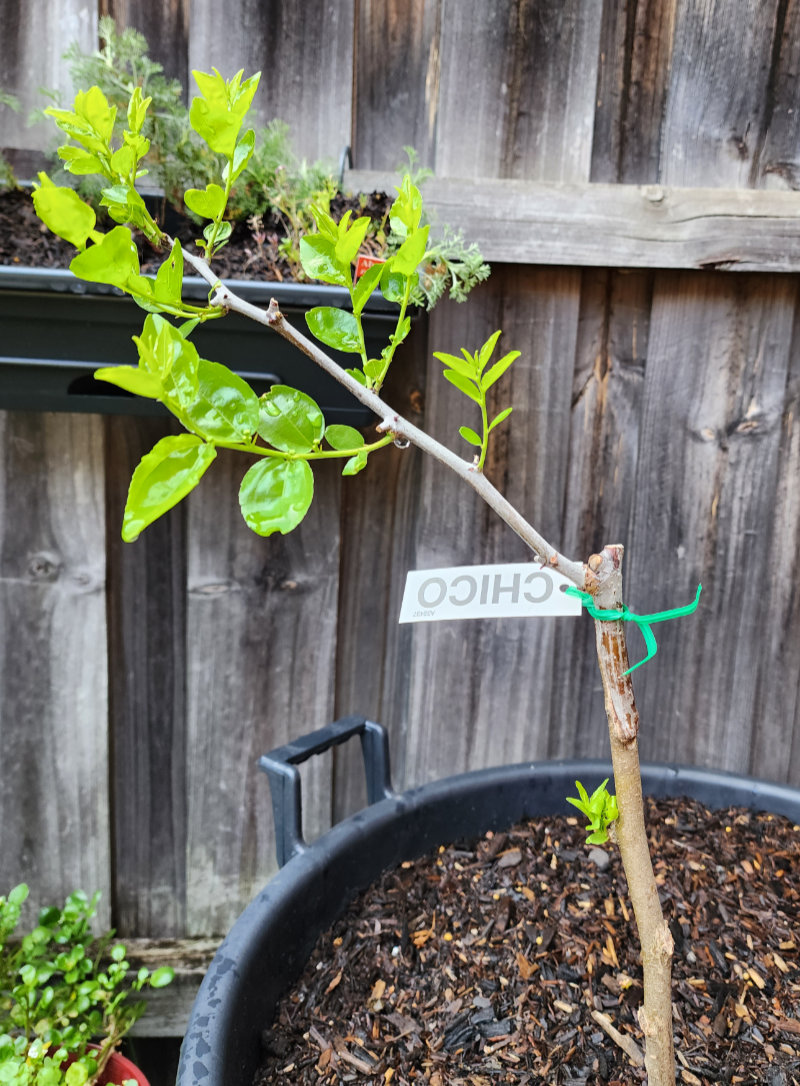
© Kim Sau
This tree is a perfect size to use as an exercise in identifying both the graft and all four branch types of a jujube tree, so let us begin!
(Please consider this no more than a crash-course, get-up-to-speed article, as we will cover more detailed breakdowns of the branch structures and bud types in following chapters.)
First let’s zoom in on the lower trunk to examine the graft:
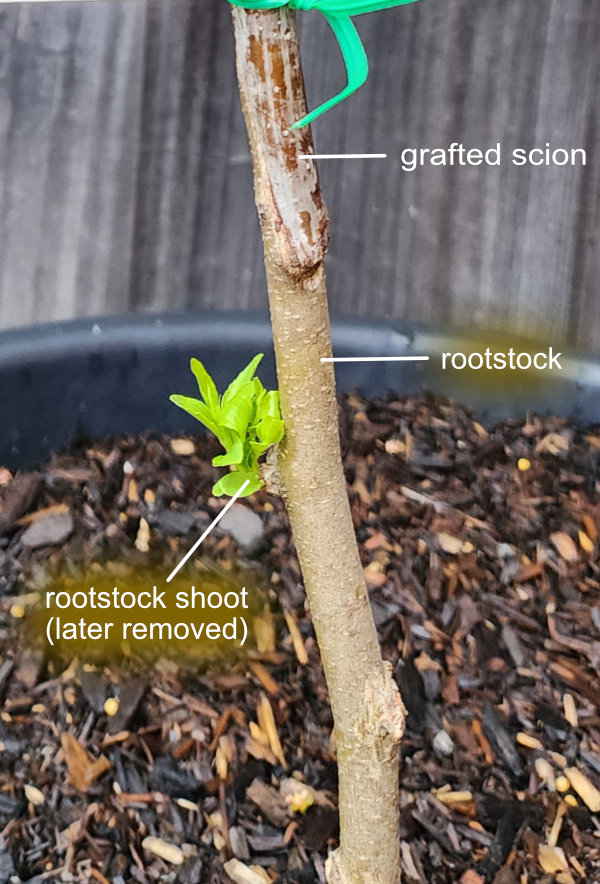
© 2023 Kim Sau
The union here would be hard to spot where it not for the strong contrast between the two woods. The scion wood has the beautiful mahogany colour of year-old wood, while the rootstock has the duller and more textured appearance of older wood. Having identified the rootstock, we now know the visible shoot is a rootstock shoot, which should be (and was) removed to prevent the graft taking over the tree.
The scion wood will increasingly become more dull and textured year-to-year as it ages. In a few years’ time it will be indistinguishable from the rootstock and the graft union will be very hard, if not impossible, to find.
And now to the upper trunk:
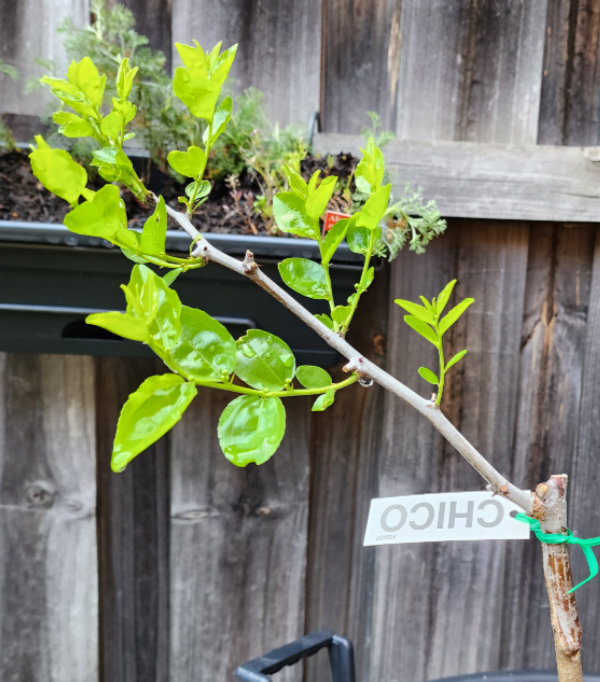
© 2023 Kim Sau
At first glance you may think that the alternating nodes and slight zig-zag shape are the tell-tale signs of a secondary branch. However, the zig-zag shape is not that pronounced, and there is an additional clue that really tells the story — the presence of trimmed branches:
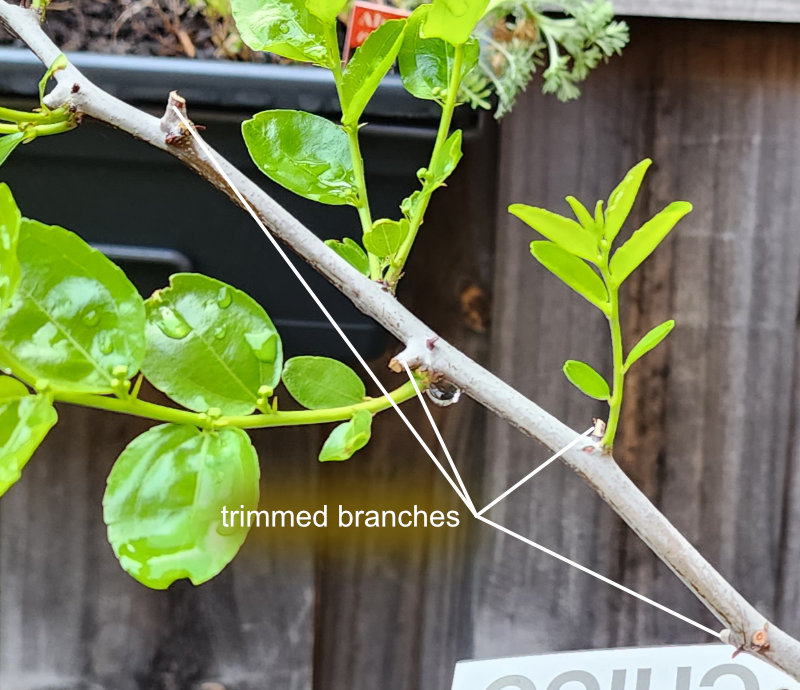
© 2023 Kim Sau
The trunk is actually a permanent branch (also known as an extension or primary branch) — the only branch type on a jujube tree from which conventional-looking branches grow flush like this. A permanent branch can grow both permanent and secondary branches, but new permanent branches will only grow from a permanent branch under certain conditions we will cover later.
These trimmed branches are lateral (along the side), which means they were the secondary branches.
Examining this trunk at a different angle reveals a new permanent branch growing at its extremity, unmistakable by its thick diameter and side-shoots:

© Kim Sau
All new jujube growth, whether branch or leaf, is this vivid green. This very green, very soft branch will gradually harden and turn a deep mahogany red by autumn next year.
Let us now focus on these two ‘branches’ of this little Chico:
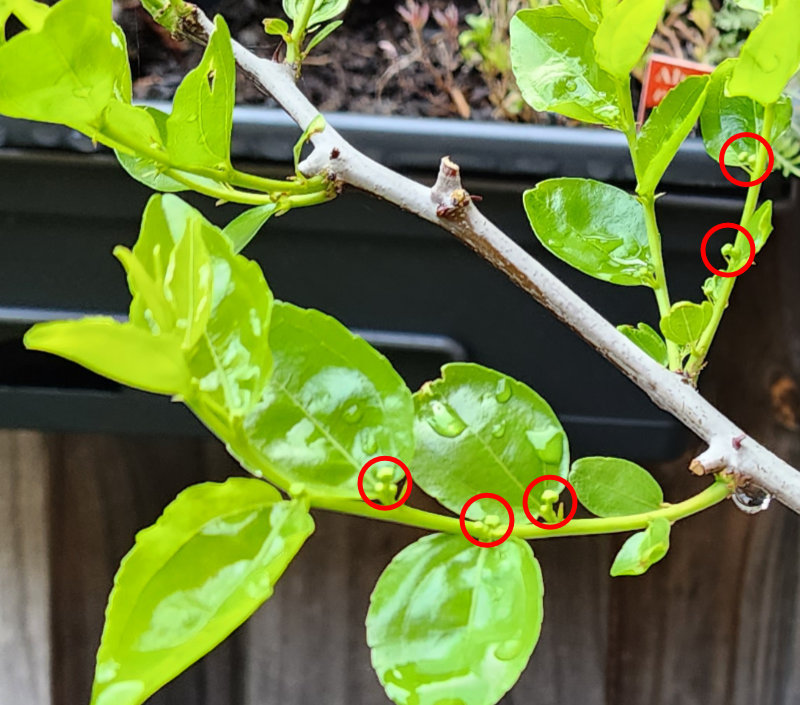
© Kim Sau
Those little buds in the red circles are always the most exciting to spot, for those are flower buds! Which means these ‘branches’ are really fruiting branchlets, and deciduous! Next winter these branchlets will fall off the tree en masse and create a frightening impression of a dying tree, but this is perfectly normal behaviour and nothing to worry about whatsoever.
Here are the (very young) buds in close-up — again with the same vivid green!

© Kim Sau
And this being a fruiting branchlet means that this protrusion on the permanent branch from which it grows:
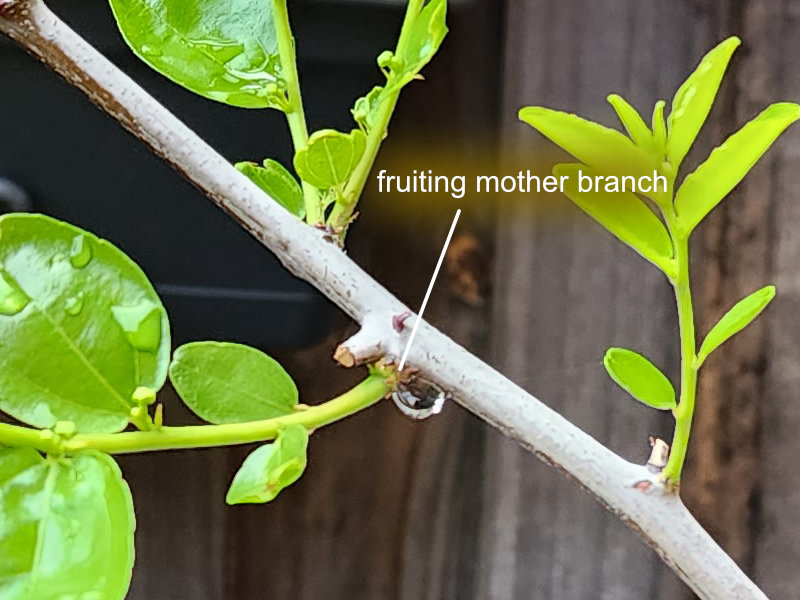
© Kim Sau
is a young fruiting mother branch. This is not a recognisable branch, is it?! But it does contain many highly compressed buds and shoots. Mother fruiting branches slowly grow another millimetre or so each year until they eventually resemble a pinecone. This branch type produces primarily fruiting branchlets but a new permanent branch will also grow when the right bud breaks dormancy.
About the Author
BSc(Hons), U.Syd. - double major in biochemistry and microbiology, with honours in microbiology
PhD, U.Syd - soil microbiology
Stumbled into IT and publishing of all things.
Discovered jujube trees and realised that perhaps I should have been an agronomist...
So I combined all the above passions and interests into this website and its blog and manuals, on which I write about botany, soil chemistry, soil microbiology and biochemistry - and yes, jujubes too!
Please help me buy a plant if you found this article interesting or useful!